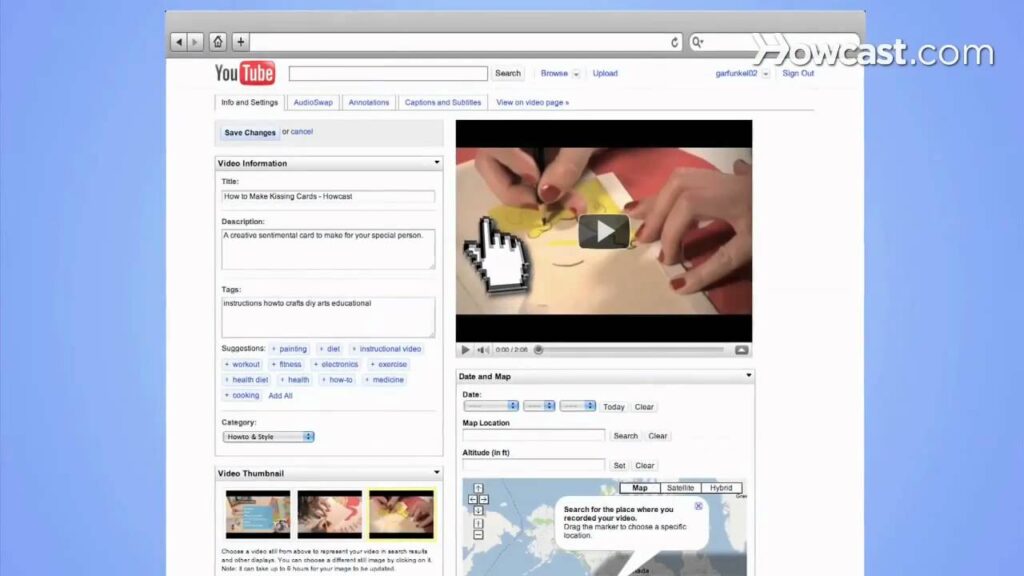
So, you’ve stumbled upon a mysterious title: “Private video”. You’re intrigued, aren’t you? Well, get ready to unravel the secrets behind this enigmatic name. In this article, we’ll explore the captivating world of hidden videos that have managed to captivate our attention despite their elusive nature. From amateur footage to viral sensations, “Private video” has become a cloak of curiosity, drawing us into its depths. With just two simple words, it beckons us to uncover the stories that lie behind closed doors.
Now, you may be wondering, what exactly does “Video By” mean? What fascinating tales lie within this unassuming phrase? Well, dear reader, prepare to be enthralled. In this article, we’ll unravel the mystery behind the powerful connection between the creator and their creation. We’ll delve into the minds of these videographers, exploring their inspirations, techniques, and the hidden narratives that make them unique. So, buckle up and get ready for an immersive journey through the world of “Video By”.

This image is property of tuberanker.com.
1. What is a Private Video?
1.1 Definition
A private video refers to a video that is intended for a specific audience or individual and not meant for public viewing. Unlike publicly accessible videos, private videos are typically protected and require certain permissions or passwords to access. They are commonly used for personal or confidential purposes, such as sensitive business communications, personal family videos, or sharing documents within a closed group.
1.2 Importance of Privacy
Privacy plays a critical role in our digital lives, especially when it comes to videos. Private videos allow individuals and organizations to keep sensitive content secure and limit access to only those who need it. By maintaining privacy, you have control over who can view your videos and can preserve confidentiality, protect personal information, maintain intellectual property rights, and uphold ethical considerations.
2. Creating a Private Video
2.1 Tools and Software
When it comes to creating private videos, there are various tools and software available to ensure the security and privacy of your content. Video editing software like Adobe Premiere Pro, Final Cut Pro, or iMovie offer options to set password protection or encrypt your video files. Additionally, screen recording software such as Camtasia or OBS Studio can be used to create private screencasts or tutorials.
2.2 Factors to Consider
Before creating a private video, it is essential to consider certain factors. Firstly, identify the purpose and target audience of the video. This will help determine the level of privacy and security measures you need to implement. Secondly, assess the sensitivity of the content and make sure to adhere to any legal or ethical guidelines. Lastly, evaluate the technical requirements and resources you have available for creating and managing private videos.
3. Protecting the Privacy of Private Videos
3.1 Encryption
Encryption is a crucial aspect of protecting the privacy of private videos. It involves encoding the video files in a way that renders them unreadable without the decryption key. Using encryption algorithms like AES (Advanced Encryption Standard) can help ensure that your videos remain secure even if they fall into the wrong hands. There are various video encryption software available that allow you to encrypt your videos before uploading or sharing them.
3.2 Restricted Access
Restricting access is another effective method of safeguarding private videos. This can be done by implementing access controls or permissions to limit the viewership. With restricted access, you can specify who can access the video through email addresses, usernames, or unique shareable links. By utilizing access management features provided by video hosting platforms or content management systems, you can control the visibility and availability of your private videos.
4. Sharing Private Videos Securely
4.1 Restricted Platforms
When it comes to sharing private videos securely, it is important to choose the right platforms or services. Opt for platforms that have robust security measures in place to protect your videos. Look for features like end-to-end encryption, secure data transmission, and strong authentication protocols. Popular video sharing platforms like Vimeo, Wistia, or Vidyard provide options to share private videos securely, ensuring that they are only accessible to authorized individuals.
4.2 Password Protection
Another way to enhance the security of shared private videos is by implementing password protection. Passwords act as a barrier and ensure that only individuals with the correct password can access the videos. When sharing videos through email or private links, include a unique password that recipients must enter to view the content. It is essential to use strong, complex passwords and avoid reusing passwords to minimize the risk of unauthorized access.

This image is property of i.ytimg.com.
5. Best Practices for Private Video Management
5.1 Organizing and Cataloging
Managing private videos effectively involves organizing and cataloging them in a systematic manner. Create specific folders or categories to sort your videos based on their content, purpose, or intended audience. By maintaining a logical structure and adding relevant metadata, such as titles, descriptions, or dates, you can easily locate and retrieve the videos when needed. Additionally, consider implementing a consistent naming convention to ensure clarity and organization within your private video library.
5.2 Regular Backups
To mitigate the risk of data loss or accidental deletion, regular backups of private videos are essential. Backing up your videos ensures that even if your primary storage device or platform fails, you have a copy of your videos stored elsewhere. Utilize cloud storage services or external hard drives to create redundant copies of your private video collection. Establish a backup schedule and automate the process to ensure that your videos are consistently protected in case of any unforeseen circumstances.
6. Private Video Storage Options
6.1 Cloud Storage Services
Cloud storage services offer a convenient and secure way to store private videos. Platforms like Google Drive, Dropbox, or Microsoft OneDrive provide ample storage space and robust security features to protect your videos. With cloud storage, you can access your private videos from anywhere with an internet connection and easily share them with authorized individuals. However, it is crucial to choose a reputable cloud storage provider that prioritizes data privacy and implements strong encryption measures.
6.2 Local Storage Solutions
If you prefer to have more control over your private videos, local storage solutions can be a viable option. External hard drives, network-attached storage (NAS) devices, or personal servers allow you to store your videos locally, eliminating the dependency on third-party cloud services. This gives you complete control over the security and privacy of your videos. However, it is important to ensure that you have adequate backup mechanisms in place to safeguard against physical damage or loss of the storage devices.
This image is property of i.insider.com.
7. Considerations for Sharing Private Videos with Others
7.1 Obtaining Consent
Before sharing private videos with others, it is crucial to obtain consent from all involved parties. This is particularly important when sharing personal or confidential videos that may contain sensitive information or portray individuals who have not given their permission to be recorded. Obtain written consent or agreements when necessary to ensure that you are complying with legal and ethical standards.
7.2 Secure Distribution
When distributing private videos to others, it is essential to prioritize security. Avoid sharing videos through insecure channels, such as public social media platforms or unencrypted email attachments. Instead, utilize secure file transfer methods or encrypted messaging platforms to transmit the videos. Communicate the importance of privacy and provide clear instructions on how to access and handle the private videos to the recipients.
8. Legal and Ethical Considerations
8.1 Intellectual Property Rights
When dealing with private videos, it is important to respect intellectual property rights. Ensure that you have the necessary permissions or licenses to use copyrighted materials in your videos. If you are sharing videos created by others, obtain their consent or provide appropriate credits as per copyright laws. Violations of intellectual property rights can lead to legal consequences, so it is essential to familiarize yourself with the applicable laws and regulations.
8.2 Privacy Laws
Privacy laws also play a significant role in the management of private videos. Different countries and regions have varying laws regarding the collection, storage, and usage of personal information. It is important to understand and comply with relevant privacy laws when creating, storing, and sharing private videos. This includes obtaining consent, implementing appropriate security measures, and adhering to data protection regulations.

This image is property of i0.wp.com.
9. Challenges and Risks of Private Videos
9.1 Data Breaches
One of the biggest risks associated with private videos is the potential for data breaches. Despite taking various security measures, there is always a possibility of unauthorized access to your private videos. Cybercriminals may exploit vulnerabilities in encryption algorithms, social engineering techniques, or targeted attacks to gain access to your private videos. It is important to stay vigilant, keep software and firmware up-to-date, and regularly monitor for any suspicious activity to minimize the risk of data breaches.
9.2 Inappropriate Sharing
Inappropriate sharing of private videos can pose significant risks to individuals and organizations. Careless sharing of sensitive videos can lead to reputational damage, legal ramifications, or breach of trust. Ensure that you educate yourself and others on the importance of responsible sharing and the potential consequences of mishandling private videos. Implementing strict access controls, utilizing secure distribution methods, and promoting privacy awareness can help mitigate the risks associated with inappropriate sharing.
10. Conclusion
Creating and managing private videos requires careful consideration and effective security measures. From understanding the importance of privacy to choosing the right tools, protecting the privacy of private videos should always be a priority. By employing encryption, restricting access, and using secure sharing methods, you can ensure that your private videos remain confidential and accessible only to authorized individuals. Additionally, staying informed about legal and ethical considerations, conducting regular backups, and being aware of potential challenges and risks will further enhance the privacy and security of your private videos.



